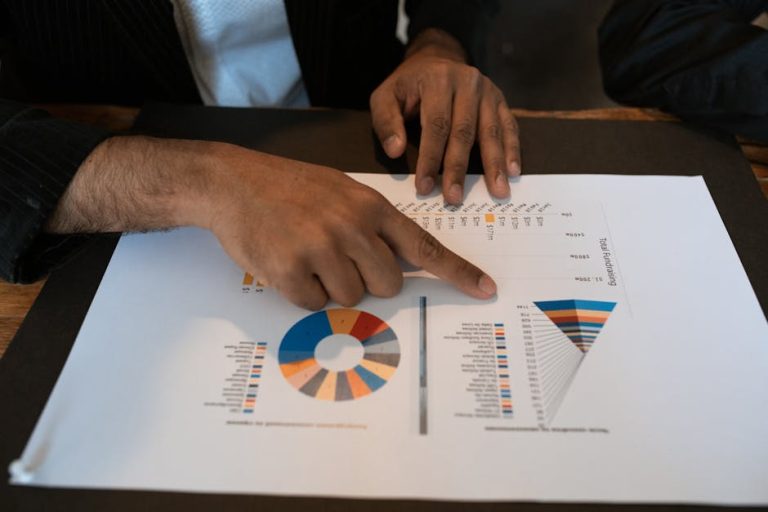In a world constantly buzzing with notifications, endless to-do lists, and the relentless pull of digital distractions, finding true, uninterrupted focus can feel like a mythical quest. Like many of you, I’ve cycled through countless productivity hacks, time management apps, and self-help books, always searching for that elusive edge. Then I stumbled upon the concept of “monk mode” – a radical, immersive approach to deep work that promised not just increased output, but profound mental clarity. Intrigued, and frankly, a little desperate for a breakthrough, I decided to dive in headfirst. This isn’t just another theoretical breakdown; this is a firsthand account of my journey, the surprising results I uncovered, and the actionable tips I gathered along the way.
My Initial Dive into the Concept of ‘Monk Mode’ Productivity
Before I could even consider embarking on this journey, I needed to understand what “monk mode” truly entailed. It’s not about shaving your head and joining a monastery (though the mental discipline shares some parallels!). From my research and interpretation, it’s a period of intentional, extreme focus where you drastically minimize distractions to dedicate yourself entirely to a specific goal or set of tasks. Think of it as creating a temporary, self-imposed bubble of deep work. For me, this wasn’t just about getting more done; it was about reclaiming my attention span, escaping the tyranny of the urgent, and finally making significant progress on projects that felt perpetually stalled.
My motivation stemmed from a growing frustration with fragmented attention. I found myself context-switching constantly, never truly sinking my teeth into complex problems. Emails, social media, instant messages – they were all chipping away at my ability to concentrate. I felt busy, but not productive. The idea of “monk mode” offered a stark contrast: a deliberate withdrawal from the noise to cultivate intense, sustained concentration. It promised not just efficiency, but a return to a state of flow, where hours could melt away as I immersed myself in meaningful work. This wasn’t a casual experiment; it was a commitment to a new way of working, even if only for a defined period.
Crafting My Personal ‘Monk Mode’ Blueprint: Rules and Boundaries for Deep Work
To truly experience “monk mode,” I knew a vague intention wouldn’t suffice. I needed a clear, actionable plan tailored to my specific goals and potential pitfalls. My first step was defining the duration and scope. I decided on a two-week period, focusing primarily on a challenging writing project that required sustained creative output. This seemed like a realistic starting point, long enough to see tangible results but not so long that burnout became inevitable.
Next came the crucial part: establishing my “monk mode” rules. These were non-negotiable boundaries designed to eliminate as many distractions as possible:
- Digital Detox (Partial): All social media apps were deleted from my phone. Email was checked only twice a day (morning and late afternoon) and only on my desktop. News sites and casual browsing were strictly off-limits during designated work hours. My phone was put on silent and placed in another room.
- Communication Blackout: I informed close friends and family about my “monk mode” period, explaining that my responsiveness would be minimal. Urgent calls were still allowed, but casual chats were postponed.
- Dedicated Workspace: I created a clean, minimalist workspace, free from clutter and personal items that could draw my attention. This physical separation helped reinforce the mental shift.
- Structured Schedule: My days were highly structured. I started with a consistent morning routine (meditation, light exercise, a healthy breakfast) before diving into work. I used the Pomodoro Technique (25 minutes on, 5 minutes off) for focused sprints, followed by longer breaks for meals and brief walks.
- Single-Tasking Mandate: During my “monk mode” sessions, I committed to working on only one task at a time, eliminating any temptation to multitask.
- Clear Goal Setting: Before each day began, I identified 1-3 critical tasks to complete, ensuring my focus was always directed towards high-impact work. This clarity was paramount.
This blueprint wasn’t about deprivation; it was about intentionality. Each rule served a purpose: to protect my focus and channel my energy towards my defined objectives. It felt challenging to set these boundaries, especially the digital detox, but I knew that without them, I’d simply be dabbling, not truly experiencing the strategy.

Unveiling the Transformation: My Tangible Results from a Period of Intense Focus
The first few days of “monk mode” were a struggle. My brain, accustomed to constant stimulation, felt restless. There was an almost physical craving to check my phone, to see what I was “missing.” But by day three, a subtle shift began. The mental fog started to lift, replaced by a clarity I hadn’t experienced in years. The results, both expected and surprising, began to manifest:
Accelerated Project Completion
My primary goal was to make significant headway on my writing project. Before “monk mode,” I was averaging about 500-700 words of quality output per day, often spread across hours of fragmented effort. During my two-week stint, I consistently produced 1500-2000 words daily, and the quality felt significantly higher. The absence of interruptions meant I could sustain a train of thought, allowing ideas to develop more fully. I completed a draft that I estimated would take me another month, all within this concentrated period. This wasn’t just about speed; it was about deeper, more cohesive work.
Enhanced Mental Clarity and Focus
Beyond the quantitative output, the qualitative shift in my mental state was profound. My attention span noticeably improved. I found it easier to dive into complex topics without feeling overwhelmed. The constant background noise in my head, a product of digital overload, quieted down. This newfound clarity extended beyond work; I felt more present in my breaks, more engaged in conversations, and generally calmer. It was akin to clearing out a cluttered room in my mind.
Reduced Stress and Decision Fatigue
Paradoxically, despite the intensity of the focus, my overall stress levels decreased. By eliminating constant notifications and the need to constantly decide what to focus on, I experienced a significant reduction in decision fatigue. My days became simpler, governed by my pre-set rules and schedule. This allowed me to allocate my mental energy entirely to my primary tasks, rather than scattering it across trivial choices and reactive responses.
A Deeper Appreciation for Downtime
When I did take breaks, they felt more restorative. Without the urge to immediately pick up my phone, I found myself truly resting. Short walks outside felt more invigorating, and even simple tasks like making coffee became mindful moments. This intensified appreciation for genuine downtime was an unexpected, but welcome, side effect, highlighting the true cost of constant connectivity.
Navigating the Challenges: What I Learned When ‘Monk Mode’ Got Tough
While the results were overwhelmingly positive, my “monk mode” journey wasn’t without its hurdles. It’s important to acknowledge that this strategy demands significant discipline and self-awareness. One of the biggest challenges was the initial resistance from my own brain. The urge to procrastinate, to seek instant gratification from external stimuli, was strong. There were moments when I felt isolated, particularly in the evenings when I would typically connect with friends online.
Another challenge was managing external expectations. Even with prior notice, some friends or colleagues occasionally expressed mild frustration at my unresponsiveness. Learning to politely but firmly reiterate my boundaries without feeling guilty was a crucial skill I developed. It taught me the importance of setting clear expectations and communicating them effectively, a lesson valuable far beyond “monk mode.”
The sustainability aspect also became clear. While incredibly effective for short, intense bursts, maintaining such extreme focus indefinitely isn’t realistic or healthy for most. I learned that “monk mode” is a powerful tool best deployed strategically, not as a permanent lifestyle. It’s a sprint, not a marathon, designed to achieve specific, demanding goals, allowing you to then return to a more balanced, albeit still focused, routine.
Lessons Learned and Practical Tips from My ‘Monk Mode’ Journey
Based on my experience, if you’re considering embarking on your own “monk mode” period, here are some actionable tips to maximize your success and navigate the inherent challenges:
- Define Your “Why”: Before you start, clearly articulate what you want to achieve. Is it a project deadline, learning a new skill, or simply reclaiming your focus? A strong “why” will be your anchor when motivation wanes.
- Start Small and Scale Up: Don’t commit to a month-long digital blackout right away. Begin with a single day, or even a few hours, dedicated to intense focus. Gradually extend the duration as you build mental stamina and discipline.
- Communicate Your Intentions: Inform your immediate circle


